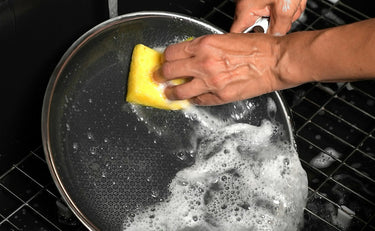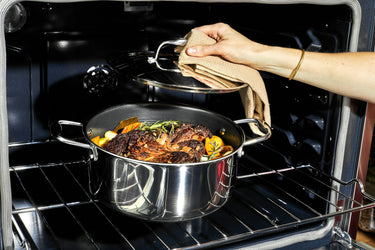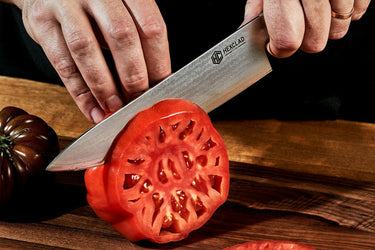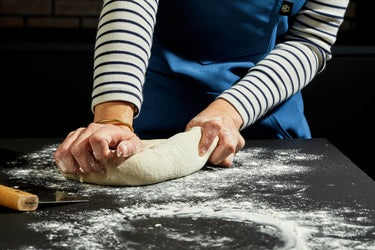How to Clean a Burnt Pot (Without Losing Your Mind)

Tried a bold new recipe that ended in a scorched disaster? Congrats: You're officially a cook. Burnt pots happen to the best of us–even the pros. The good news? You don’t need harsh chemicals or a hazmat suit to fix a badly burnt pot or pan. Common household pantry staples (and a minimum of tears) and you’re well on your way to a clean pot or pan.
Option 1: Just Add Water (and Heat)
Sometimes the fix is as simple as water. Fill your burnt pot with a couple of inches of water and bring it to a simmer. Let it bubble for 10 to 15 minutes. That gentle heat will loosen the stuck-on burnt bits without scratching your cookware or your soul. Scrub with a soft brush or sponge and rinse. Done.
Option 2: Dish Soap Soak
Got HexClad pans? Good call. For everyday cleaning, we recommend hand washing with warm soapy water–use mild dish soaps–and a soft sponge. Remember, HexClad pans perform best on low to medium heat. Cooking with high temperatures can cause a build up of burnt residue. But there’s a quick fix: Soak them in warm, soapy water for 10 to 15 minutes, then clean with a soft sponge. The fixes below are not recommended for HexClad cookware.
Option 3: Bring In the Vinegar
If boiling water doesn’t cut it, it’s time to get acidic. Add equal parts water and white vinegar to your burnt pan and let it simmer. Vinegar’s acetic acid breaks down stubborn burnt spots like a pro. You can even toss in lemon juice for bonus cleaning points (and a nice scent).
Option 4: The Vinegar + Baking Soda Show
Still not clean? Time for the classic high school chemistry combo: baking soda and vinegar. Mix two parts vinegar to one part baking soda directly in the burnt pot. Let it fizz and sit for 10 minutes. Then scrub with a scouring pad.
Option 5: Should You Try the Aluminum Foil Hack?
You might’ve heard of the “foil ball scrub” trick–hot water, soak, then scrub with crumpled foil. It can work, but it’s risky. Scrubbing with foil can scratch a nonstick pan’s coatings or delicate surfaces, including HexClad’s patented TerraBond™ nonstick surface, so check the manufacturer’s site before attempting this trick.
Option 6: Dryer Sheets?
Yes, dryer sheets. Fill your burnt pot with warm water, a drop of dish soap and a dryer sheet. Let it soak for 15 minutes (or overnight if the damage is dramatic). Then wipe clean with a non-abrasive sponge. It’s bizarre, but it works.
Here are a few more cleaning tips:
Use the Right Heat
Higher heat doesn’t necessarily equal better cooking. Unless you’re searing a protein, most foods do just fine at low to medium temps. Cranking the heat can burn proteins on the outside while leaving the inside raw, leaving you with a scorched pan.
Don’t Skimp on Oil
Lack of oil is a top reason for food sticking (and burning). If you’re not using nonstick or Hybrid cookware, you’ll need to be generous with the butter or oil.
Upgrade Your Cookware
You don’t need to suffer through burnt pans forever. Consider switching to durable, Hybrid stainless steel cookware like HexClad. It’s nonstick, metal utensil–safe, dishwasher-friendly, and looks great hanging from a pot rack like the kitchen trophy it is.
Final Thoughts
You burned the pot. Big deal. Now you know how to clean a burnt pot–and more importantly, how to stop it from happening again. No shame, no stress. Just smarter cooking and cleaner pans. Time to get back in the kitchen and try again–this time with less smoke.




